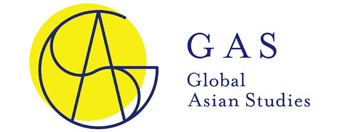Reflecting Upon the Summer Program
Professor Shigeto Sonoda (Institute for Advanced Studies on Asia, The University of Tokyo Interfaculty Initiative in Information Studies and Graduate School of Interdisciplinary Information Studies)
This essay came out later than usual. In August and September, I was extremely busy with implementing four (joint) summer programs as well as conducting intensive lectures, attending two international conferences, and dealing with other commitments. But as always, we as designers and operators of summer programs learned tremendously from them, more than did the student participants.
The join summer program with the University of Hong Kong where participants from the University of Hong Kong and the University of Tokyo stayed in the same accommodation and participated in a variety of activities organized under the theme of “‘Japan’ in Hong Kong.” The joint summer program with Seoul National University which contained Tokyo Round and Seoul Round meant for students to understand from multiple perspectives the realities of Japan and Korea. The joint summer program with Peking University where Japanese and Chinese students explored together, by focusing on Japanese enterprises in China, how enterprises, after moving beyond national borders, make efforts to localize in foreign environments. Then there was the Global Japan Studies summer program which combined morning lectures with afternoon fieldtrips under the theme of “postwar Japan.” All these programs were in one way or another related to Japan, despite the differences in extent to and ways in which partner universities participated (in the case they did participate), and differences in terms of diversity of activities, characteristics of student participants, program periods, and whether there were activities in Tokyo. The actual situation is that when we create programs partnered with overseas universities, they have to be related to something about Japan if we want the University of Tokyo students to participate in.
What could we learn from organizing the programs? First and foremost, is the existence of different perspectives toward Japan in and outside of Japan.
As was introduced in the Nikkei Newspaper on October 1, 2016, Japanese enterprise culture is currently a popular topic at Peking University, which I could strongly feel during the joint program. Things taken for granted by Japanese enterprises were entirely new for local students who glued to explanations given by Japanese enterprise employees.
At the beginning of the joint program with Peking University, upon being asked, Chinese students showed negative images about Japanese enterprises such as “high workload,” “stressful workplace atmosphere,” and “lack of dynamism because of long-term and stable employment.” But when they visited Japanese companies and experienced the atmosphere in factories and offices, their evaluation changed drastically. In particular, they were strongly interested in the unique ways in which Japanese enterprises communicate and develop products and commodities, and were impressed by how Japanese enterprises can continuously develop new products and services.
The Global Japan Studies summer program used a number of keywords and combined lectures with fieldtrips for students to understand postwar Japan. Among them, students responded with unexpectedly large amount of interest to Prof. Honda Yuki’s lecture on poverty. We expected Prof. Honda to talk about postwar education so in a double and positive sense, we were “betrayed” by Prof. Honda’s lecture. Most overseas students assumed postwar Japanese history to be the history of bidding farewell to poverty, but Prof. Honda was saying that not only does poverty problem still exist in Japan but that the very idea that poverty no longer exist in Japan contributes to concealing the existence of poverty. Prof. Honda’s point must have reached the depth of students’ heart.
Whether it is enterprise or poverty, many Japanese students and researchers take them as natural phenomena. Overseas students and researchers, however, do not necessarily see Japan in the same way, and what we think as natural in many cases become new discoveries for them. We have expected and predicted when establishing the Global Japan Studies program that the program shall be where new possibilities of research and education could emerge, but it is really a fun to see this actually happening.
Nevertheless, we have still only limited number of staff members to implement this kind of programs which can reveal the gap in understanding between us and overseas students/researchers. Even though we can find professors to lecture, it is difficult to find professors who are willing to design and operate the program. As a result, this burden has been borne by a specific group of staff and this structural problem has not changed for the past several years.
The largest problem is the gap between the academic calendars of the University of Tokyo and world partner universities. The three above-mentioned programs were all organized in August. Student participants of the Global Japan Studies program have asked about whether we could start our program earlier. Gaps in understanding can function like tail wind in contributing to research and education, but the gap in academic calendar is quite different. Our struggle, then, shall continue.



